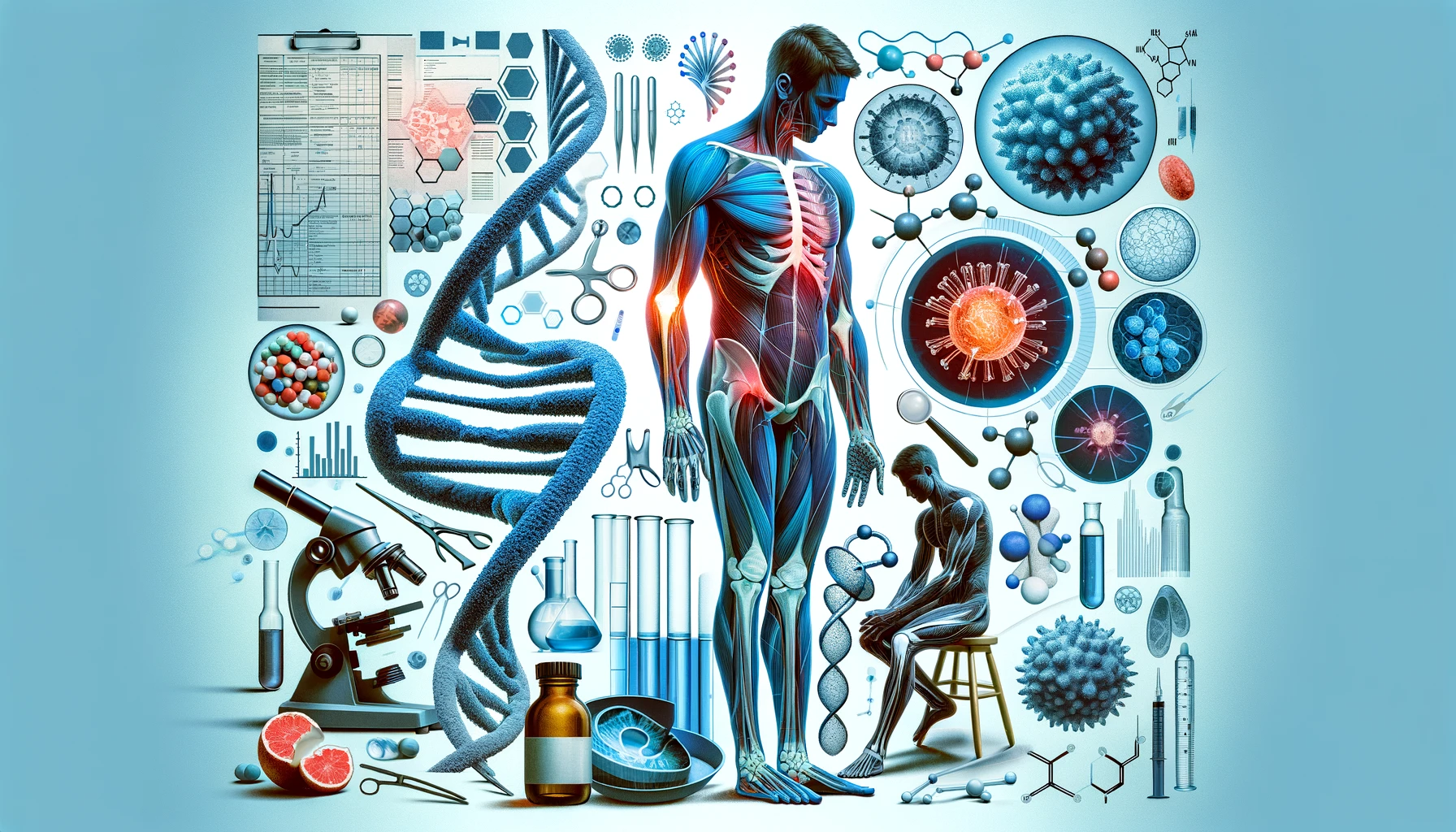Ehlers-Danlos Syndrome Type 3 (hEDS), a condition characterized by hypermobility and connective tissue disorders, has long eluded comprehensive understanding in the medical community. However, recent advancements in research are shedding light on its causes, impacts, and potential treatments. This article delves into the latest findings and explores how these discoveries are paving the way for better management of hEDS.
1. Genetic Discovery Involving Folate Deficiency Recent research at Tulane University has unveiled a critical link between a variant of the MTHFR gene, folate deficiency, and hEDS. This deficiency disrupts the binding of crucial proteins to collagen, leading to more elastic connective tissue. This breakthrough could lead to more accurate diagnoses through blood tests and genetic screening.[1]
The MTHFR gene mutation affects an enzyme responsible for processing folate (vitamin B9), crucial for DNA repair, synthesis, and methylation. Mutations can lead to reduced enzyme efficiency, impacting folate metabolism and potentially leading to higher levels of homocysteine, a risk factor for various health issues. Symptoms vary widely and can include fatigue, cardiovascular issues, and neurological problems. To determine if one has this mutation, genetic testing through a blood sample is typically conducted. It’s important to consult healthcare professionals for accurate diagnosis and appropriate management strategies, which may include dietary adjustments and supplementation.
2. Treatment with Methylated Folate An encouraging development from this discovery is the effectiveness of methylated folate, an FDA-approved treatment. Patients receiving this treatment have reported significant improvements in their symptoms, suggesting a safe and effective management strategy for hEDS.[2]
Methylated folate and regular vitamin B (like folic acid, the synthetic form of vitamin B9) differ mainly in their biochemical forms and how the body uses them. Methylated folate is the biologically active form of folate, readily used by the body without requiring conversion. This form is especially beneficial for individuals with MTHFR gene mutations, as their bodies may struggle to convert folic acid into its active form. On the other hand, regular vitamin B, including folic acid, needs to undergo several metabolic steps to become active in the body. This process can be inefficient in those with certain genetic variations, making methylated folate a more effective option for them.
3. Biopsychosocial Impact of hEDS A proposed scoping review aims to explore the comprehensive biopsychosocial impact of hEDS, focusing on its biological, psychological, and social implications. This holistic approach is critical in understanding and managing the condition more effectively.[3]
Biological Impact: hEDS affects individuals biologically through symptoms like joint hypermobility, chronic pain, fatigue, and a range of associated conditions like gastrointestinal issues, cardiovascular irregularities, and skin elasticity problems. These physical manifestations significantly affect the quality of life and daily functioning of individuals with hEDS
Psychological Impact: The condition also has substantial psychological implications. Individuals with hEDS may experience diagnostic uncertainty, leading to stress and anxiety. This uncertainty, particularly in the context of chronic pain, can be distressing, especially for younger patients. Furthermore, the chronic nature of hEDS and its symptoms can contribute to mental health challenges, including anxiety, depression, and reduced pain acceptance, impacting patients’ adaptation to daily activities and overall well-being
Social Impact: On a social level, hEDS can impact education, employment, and social relationships. The unpredictability and debilitating nature of the symptoms can lead to reduced social interactions and participation in work or educational activities. This, coupled with the frequent need for medical appointments and treatments, can significantly disrupt normal social functioning and lead to a feeling of isolation
4. Dysregulation of Extracellular Matrix in hEDS A study has highlighted dysregulation in the extracellular matrix and the Lysyl Oxidase enzyme in hEDS type IV skin fibroblasts. This finding is significant as it relates to the integrity of connective tissue, a key aspect of hEDS.[4]
The extracellular matrix (ECM) in hypermobile Ehlers-Danlos Syndrome (hEDS) functions as a complex network that provides structural and biochemical support to the surrounding cells. Composed of various proteins, including collagens and elastins, the ECM in hEDS is characterized by its abnormal elasticity and resilience. This altered state results in an increased stretchiness of the skin and hypermobility in the joints, but it also compromises the strength and integrity of these tissues. Essentially, the ECM in hEDS does not maintain its structural rigidity as effectively, leading to the various symptomatic manifestations of the syndrome.
5. Long COVID and hEDS Diagnosis Link There is emerging evidence of a connection between long COVID symptoms and hEDS. This link suggests that the immune response triggered by SARS-CoV-2 infection could lead to the onset or exacerbation of hEDS symptoms, offering new insights into its diagnosis and management in the post-pandemic era.[5]
Conclusion The journey to understanding and effectively managing hEDS is ongoing, but recent research has opened new doors. From genetic discoveries to the impacts of long COVID, the advancements provide hope and direction for those affected by this complex syndrome. As research continues, more innovative treatments and deeper insights will likely emerge, further improving the quality of life for those with hEDS.
- Sources:
- 1. Pain News Network: “Researchers Find Possible Cause of Hypermobile EDS” – This article discusses the discovery of a genetic variant related to folate deficiency and its potential link to hEDS.
- 2. ScienceDaily: “Could a vitamin deficiency cause ‘double-jointedness’ and hypermobile Ehlers-Danlos syndrome?” – This source covers the same study, highlighting the treatment potential of methylated folate.
- 3. Systematic Reviews: “Exploring the biopsychosocial impact of hypermobility spectrum disorders and Ehlers-Danlos syndrome in an adult population: a protocol for a scoping review” – This article outlines a protocol for reviewing the biopsychosocial impact of hEDS
- 4. Orphanet Journal of Rare Diseases: “Dysregulation of extracellular matrix and Lysyl Oxidase in Ehlers-Danlos syndrome type IV skin fibroblasts” – This study examines the changes in extracellular matrix and enzyme regulation in hEDS type IV
- 5. Ehlers Danlos News: “Long COVID symptoms lead to hEDS diagnosis in small study” – This article discusses a study linking long COVID symptoms to the onset or worsening of hEDS symptoms.


